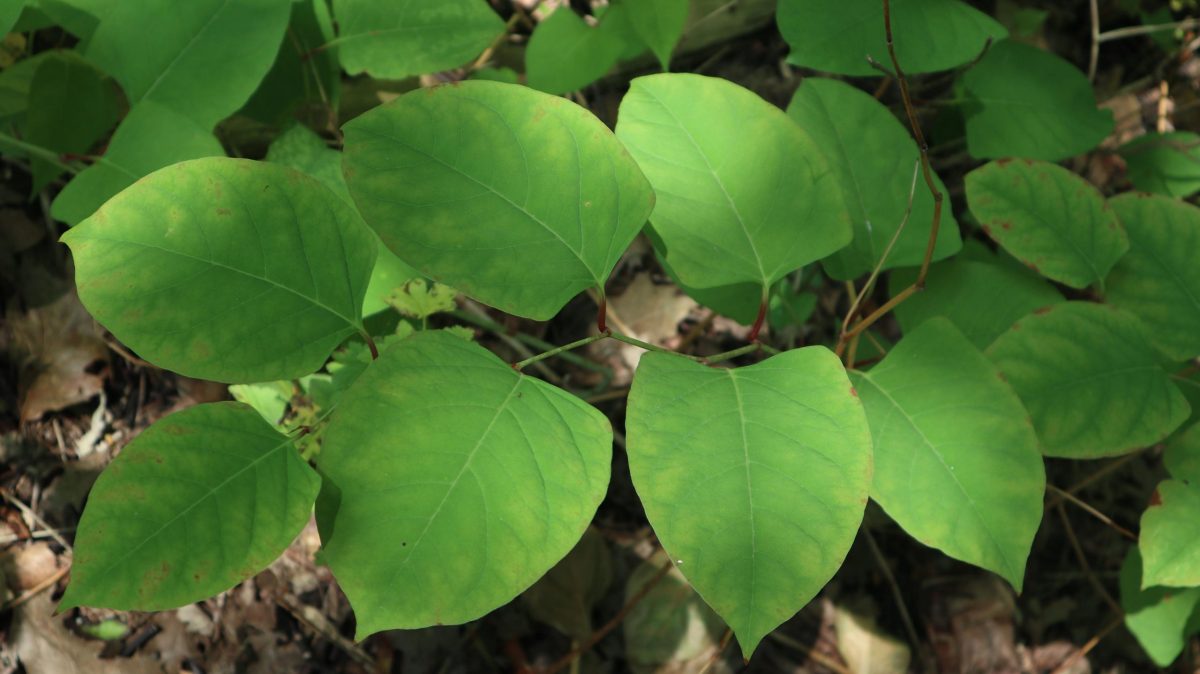Japanese Knotweed
Japanese Knotweed is a highly invasive plant native to East Asia. Despite its invasive growth tendencies, it’s grown and sold in North America as a horticultural plant.
Roots are capable of damaging infrastructure and have been observed growing through paved pathways, among other hard surfaces.
Japanese Knotweed spreads quickly and crowds out native plants. The loss of native plants reduces the biodiversity of an area. This results in reduced ecosystem health and less resilience to environmental change.
What it looks like

| Form | Large (1 to 3 metres tall) non-woody shrubs. |
|---|---|
| Habitat | Often found along the shores of streams, lakes, riverbanks and wetlands. It can also grow in other diverse habitats, including disturbed forest edges, roadsides, ditches, fence lines or at old homesteads. |
| Leaves | Alternates on the stem and can have an oval to triangular shape with a pointed tip and flat base. |
| Flowers | Small with white or green colour. |
| Fruit | Seeds are winged, triangular, shiny and very small. |
| Stem | Smooth and hollow stems start red to purplish, then turn green with reddish or purple specks, and then turn brown or grey in the winter and remain standing when dead. |
Horticultural varieties might look slightly different than the above description.
How it spreads
Japanese Knotweed spreads very effectively through root systems and fragments but also creates winged, airborne seeds that can travel long distances.
What you can do
Brush seeds off your shoes and pets before leaving a park or natural area to prevent transporting them to another location.
Report Japanese Knotweed plants found in City parks and natural areas.
Remove Japanese Knotweed plants on your own property. Don’t compost any removed material, as these plants can regrow from fragments and can contaminate new areas. Place any removed material in a dark plastic bag for one to two weeks in the sun to ensure any plant material is no longer viable, then dispose of it regularly with other garbage.